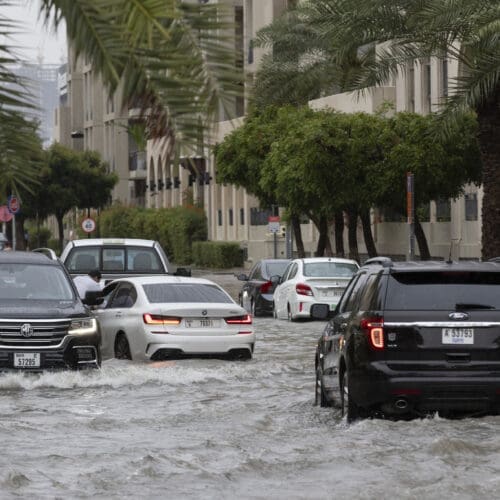The Dubai Flood Damage: Now the sun’s come out – what’s next?
June 2024The Insurance market and bringing claims
On 16 April 2024, the UAE recorded its heaviest rainfalls since records began in 1949. With more than 250 mm (around 10 inches) of precipitation falling in less than 24 hours, there was severe flooding in many areas of the Emirates causing significant disruption to businesses and damage to properties, infrastructure, cars and equipment.
Now that the water levels have receded and the nation has dried out, we wade through some of the issues arising from the floods (pun intended) and set out what comes next in our latest series of articles from our Dubai office.
Insurance Market Generally:
The total economic cost of the floods is likely to be significant with insurers preparing to bear the brunt of the claims. The most significant claims by value are likely to be property related, arising from damage to residence towers, warehouses, factories, malls, and hotels. There will also be a surge in the number of business interruption claims along with a significant number of motor vehicle claims from both those cars lost to the floods, and those which were damaged as a result of driving through flood waters.
Many of the domestic insurers will be responsible for dealing with the fallout of these insurance claims, but given that the UAE rarely experiences natural catastrophes at such a scale, it is uncertain whether they will have planned for such a risk by taking out re-insurance.
This could cause some liquidity issues if sufficient catastrophic loss protection was not sourced, but will in any event lead to a decline in profits.
It is also likely to result in re-insurers demanding higher rates when renewing agreements with local insurers.
Whether covered by insurers, this cost will ultimately be passed through to policyholders who will have to pay higher rates and increased in the deductibles.
Coverage:
If you have suffered loss or damage resulting from the flood, as a practical step, we recommend that in the first instance you notify the claim and then take the time to check the specific terms of your policy to see what coverage you actually have.
Policyholders with a “flood”, “natural disaster”, “prevention of access” or “catastrophe” clause are likely to be covered for flood related losses. This also applies if you have coverage for business interruption.
However, all policyholders should obtain independent legal advice on the extent of cover available and should not rely on any statements by insurers, news outlets or other commentators as to whether they may or may not have cover.
Policies may contain a range of terms and conditions about coverage limits, exclusions, and deductibles.
Legal advice can help clarify the specifics of your policy, ensuring you know what is covered and how to proceed with your claim.
How to Bring a Claim:
Once coverage has been established, the key item to address when bringing a claim will be to (i) properly notify the insurer of the claim, and (ii) provide evidence of the damage and corresponding loss.
This may be easy if it is an obvious material loss, however things become slightly more difficult if the evidence of the damage is concealed or difficult to see, or if the loss will only be realized after completion of the monthly bookkeeping (as is the case for most business interruption claims).
To best protect your interests, it is recommended that the claim is supported with as much evidence as possible, which may include videos, photographs, and reports. Care should also be taken to ensure that access is provided to any damaged areas so that loss adjusters can quickly assess the damage.
Looking Forward
As construction and insurance specialists, we are well placed to assist with any queries you may have. Lyndon Richards is Head of our insurance practice in the Middle East , so please feel free to reach out if you have any queries.
Download PDF








